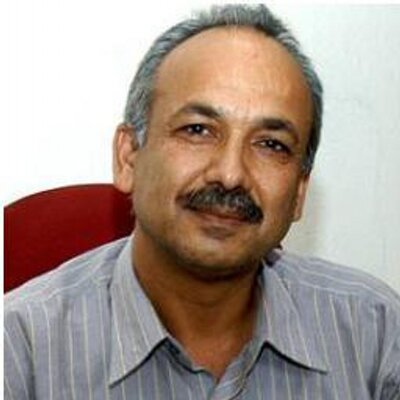 By Yubaraj Ghimire – Rajnath Singh is among the BJP’s few top leaders who have kept a close watch on developments in Nepal, occasionally warning that things were not moving in the right direction. Since April 2006, when Kathmandu took the radical path, Singh has met almost every visiting Nepal prime minister and advised them that doing away with Nepal’s Hindu identity was wrong and a reconciliation between the pro-change and traditional forces was the right way to establish stability and peace.
By Yubaraj Ghimire – Rajnath Singh is among the BJP’s few top leaders who have kept a close watch on developments in Nepal, occasionally warning that things were not moving in the right direction. Since April 2006, when Kathmandu took the radical path, Singh has met almost every visiting Nepal prime minister and advised them that doing away with Nepal’s Hindu identity was wrong and a reconciliation between the pro-change and traditional forces was the right way to establish stability and peace.
Two years ago, as BJP chief, he had declared that the UPA government’s Nepal policy had failed “disastrously”. At a time when Indian officialdom was encouraging pro-identity politics — understood as ethnicity-based federalism in Nepal — Singh, as an opposition leader, warned publicly that this would lead to the balkanisation of Nepal. But a recent statement attributed to Singh by some sections of the media — “Although the Madhesi problem is an internal issue… the government of India will protect the one crore Indians living there” — not only contradicted his own earlier stance but immediately drew hostile comments in Nepal’s corridors of power, where India is, at times, viewed with deep suspicion.
But within hours of the incident, Singh’s denial was issued through the Indian embassy in Kathmandu, asserting that “the home minister made no such comments”. In 2001, remarks attributed to actor Hrithik Roshan had sparked anti-India riots in Nepal, and there were fears that the alleged statement by a senior Indian minister — especially when Madhesi groups are agitating for more autonomous provinces — may lead to an even worse situation. Singh took the initiative to undo the possible damage to the goodwill he personally enjoys in Nepal, as well as to bilateral relations.
But the alleged statement, even after the denial, sparked a series of clashes in several regions, resulting in seen 34 deaths in less than 10 days — though these were largely in protest against the demarcation of provinces. Nepal is currently aflame, with more than a dozen places under curfew. Some people fear the situation may escalate into an ethnic or civil conflict. In western Nepal’s Tikapur, agitating locals killed eight police personnel. The government has deployed the army in four places, but refused to concede to the demand to withdraw the troops as a precondition for dialogue. Finally, on Friday, the ruling parties agreed to suspend the proposed voting and invite the agitating groups for a dialogue. But that hardly guarantees a broader understanding. A day after the killing of police personnel in Tikapur, Indian Prime Minister Narendra Modi had a telephone conversation with his Nepali counterpart, Sushil Koirala.
Modi suggested the restoration of normalcy and law and order first, and then reaching out to all sides as well as the public on the features of the constitution. Unfortunately, Koirala’s coalition government has done little on either front. More and more areas, including business and industrial hubs like Biratnagar and Birgunj, both bordering Bihar, are witnessing violent protests. Ominously, protestors in Birgunj demolished the statue of G.P. Koirala, the “hero” of the 2006 political movement and patriarch of the current establishment. A secular or Hindu Nepal, the question of federalism — its basis and the degree of autonomy for provinces — and a republic or monarchy: These matters continue to divide the political spectrum, with the three key parties for now refusing to revisit the debate.
The first constituent assembly, elected in April 2008, had pledged to deliver the constitution by May 2010. But the four major groupings — the Nepali Congress, Communist Party of Nepal-Unified Marxist Leninist, the Maoists and the Madhesi parties — monopolised the entire political process. As for the rest, that space has now shrunk further. The Madhesi parties and other ethnic groups are opposing the federal boundaries demarcated by the major parties and demanding autonomy for their regions.
There’s a breakdown of the constitutional machinery. Singh’s alleged statement, many think, may have been exploited by discredited Madhesi leaders while, at the same time, leading to criticism of the Madhesis for the “patronage” they get from India. A timely denial has applied balm. But the conflict over the constitution remains.
[email protected] . This article has been originally published in The Indian Express on 14 Sept 2015.


